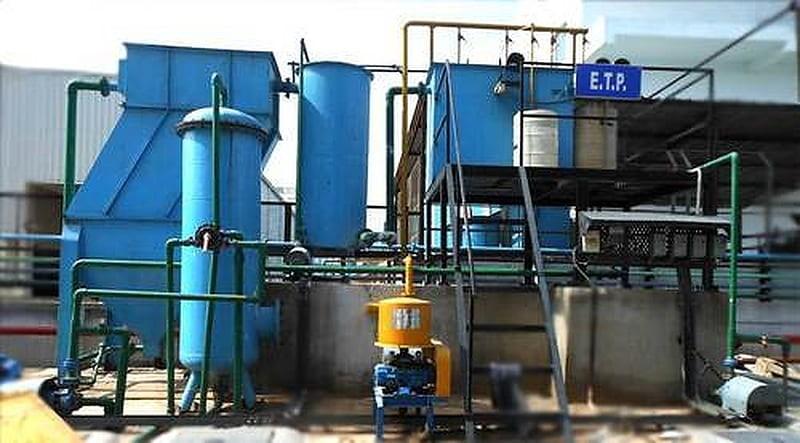Effluent Treatment Plant is vital infrastructural components designed to treat industrial wastewater before its discharge into the environment. Unlike sewage treatment plants that primarily focus on domestic wastewater, ETPs cater to the complex contaminants and pollutants generated by industrial processes. This article explores the significance of ETPs, their functioning, key components, and the role they play in environmental conservation and sustainable development.
Understanding Effluent Treatment
Effluent refers to wastewater discharged from industrial processes, containing various pollutants such as chemicals, heavy metals, organic compounds, and suspended solids. Effluent treatment is essential to prevent these harmful substances from contaminating natural water bodies, soil, and air, thereby safeguarding ecosystems and public health.
Key Components of Effluent Treatment Plants
- Primary Treatment: Like sewage treatment plants, ETPs begin with primary treatment processes that involve physical screening, sedimentation, and settling to remove large particles and floating materials from the effluent.
- Secondary Treatment: The secondary treatment stage employs biological processes like activated sludge, oxidation ponds, or biological filters to break down organic compounds and reduce the chemical oxygen demand & biochemical oxygen demand (BOD) of the effluent.
- Tertiary Treatment: In some cases, tertiary treatment may be necessary for further purification. This stage often includes advanced filtration techniques, chemical treatments, and membrane processes to remove remaining contaminants and ensure the effluent meets regulatory standards for discharge.
Effluent Treatment Plant Technologies
- Advanced Oxidation Processes (AOPs): AOPs such as ozonation, UV irradiation, and advanced oxidation with hydrogen peroxide are effective in degrading persistent organic pollutants and refractory compounds present in industrial effluents.
- Membrane Technologies: Membrane-based processes like reverse osmosis (RO), nanofiltration (NF), and ultrafiltration (UF) are used for separating dissolved solids, ions, and contaminants from effluent streams, producing high-quality treated water suitable for reuse or discharge.
- Ion Exchange and Adsorption: Ion exchange resins and adsorbents like activated carbon are utilized to remove heavy metals, ions, and specific organic compounds from effluents, enhancing the overall treatment efficiency.
- Biological Treatment Innovations: Advanced biological treatment methods such as aerobic granular sludge technology, biofilm reactors, and constructed wetlands are employed for efficient nutrient removal, denitrification, and biodegradation of pollutants in industrial wastewater.
Benefits of Effluent Treatment Plants
- Environmental Protection: ETPs play a crucial role in preventing pollution of natural ecosystems, groundwater resources, and aquatic habitats by treating industrial wastewater to meet environmental standards before discharge.
- Compliance with Regulations: Effective effluent treatment ensures compliance with regulatory requirements and permits, avoiding fines, legal issues, and reputational damage for industries.
- Resource Recovery: Some ETPs incorporate resource recovery processes, enabling the extraction of valuable substances like metals, nutrients, and energy from wastewater for reuse or recycling purposes.
- Water Conservation: By treating and reusing water within industrial processes, ETPs contribute to water conservation efforts, reducing overall water consumption and promoting sustainable water management practices.
Challenges and Future Trends
Despite the benefits, challenges such as high operational costs, technological complexity, sludge management, and emerging contaminants pose ongoing challenges for ETPs. Future trends in effluent treatment focus on innovation, sustainability, and circular economy principles, including:
- Development of compact and modular ETP designs for easier installation and operation.
- Integration of IoT (Internet of Things) and AI (Artificial Intelligence) for real-time monitoring, optimization, and predictive maintenance of ETPs.
- Implementation of green chemistry and eco-friendly processes to minimize chemical usage and waste generation in industrial wastewater treatment.
- Collaboration between industries, research institutions, and government bodies to drive technological advancements, knowledge sharing, and best practices in effluent treatment. Trends Share
Conclusion
Effluent Treatment Plant are indispensable components of industrial infrastructure, playing a pivotal role in mitigating environmental pollution and promoting sustainable industrial practices. Through continuous innovation, technological advancements, and regulatory compliance, ETPs contribute significantly to environmental conservation, water resource management, and the transition towards a circular economy. Investing in efficient effluent treatment not only protects ecosystems and public health but also fosters responsible industrial growth and development in harmony with nature.



